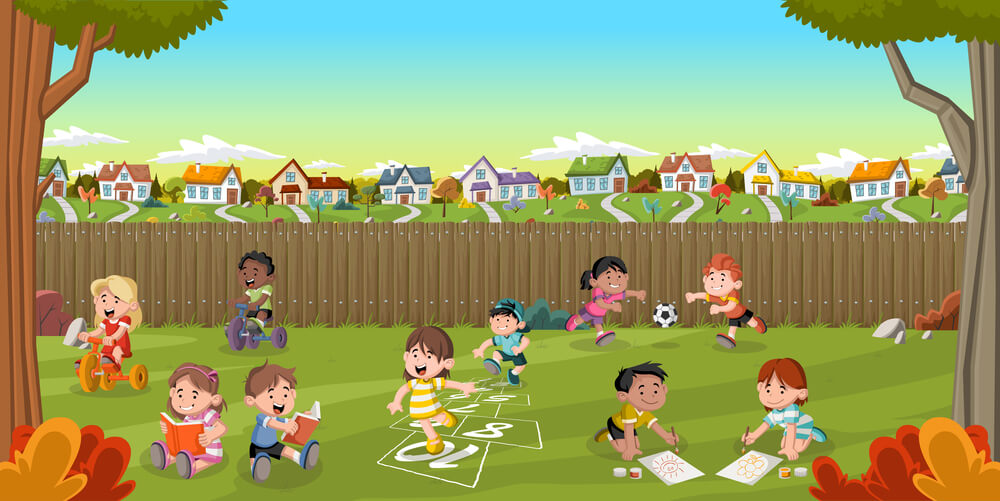Six Steps to Creating an Outdoor Play Space Your Children Will Love

Play spaces for children should be safe, imaginative and lots of fun. We’ve taken some of the very best advice from experts and put together these six easy steps to help you to create an outdoor space that kids will absolutely adore. Whether it’s a home or early education setting, we can help you to stimulate children’s imaginations in a way that’s both affordable and engaging.
1) Active Play
Outdoor adventure playground equipment is great to get children swinging, sliding and bouncing. There are plenty of simple ways to make use of your children’s energy and encourage them to be physically active, as you test the water for adding full play equipment to your garden. You could also utilise loose equipment like hoops, skipping ropes, balls and bean bags, which can keep children entertained for hours.
You could use a cardboard box to make a ‘car’ or ‘van’ for your children, and get them involved in the craft process by encouraging them to help paint or colour it in. Imagine if you then added a car-themed piece of garden play equipment down in the future! Another favourite is a balance beam made by attaching some decking plank above a few recycled tyres – this is really easy to construct and super fun to use!
2) Messy sensory play
Children love to experiment with different sensations and textures through sand, water and mud play. It’s a great way to activate children’s senses and support important brain development. A permanent sand pit or mud pit is marvellous, and you can also get creative and use smaller tubs or vessels to hold sensory materials, which are a great addition to the overall structure. Children find it fascinating to work with their hands, so you could invest in some spades and scoops to be used as ‘tools’ for play.
3) Creative play
There are so many creative play elements that children can enjoy outdoors. Music, art, problem solving, building and role play are just a few. Creative outlets such as fancy dress costumes, easel and paints and play silks can be made even more fun by bringing them outside. You could even invest in a more permanent fixture to spark children’s creative enterprise such an outdoor chalkboard or a music wall full of chimes, symbols and drums (that’s if your neighbours don’t mind!).
4) Imaginative play
Bring your garden to life and encourage your child to play imaginatively by adding play figurines such as gnomes, fairies and other elements of whimsy to spark stories and adventures when they’re playing in the garden. Areas that are specifically dedicated for children could also be adorned with child-safe plants and flowers to help children to become part of their fantasies. With the right adornment, children could picture their play space as a fairy garden, bear cave, pirate ship or a wild animal safari.
5) Quiet play in secret spaces
Dens, forts, tepees, hammocks and Wendy houses are all great ways to provide respite from the busyness of outdoor play. Some children prefer a secret, cosy space where they can hide away and put on a tea party for their teddy bears, or just be alone and still.
6) Safe play with natural elements
Involve the children in caring for your garden and teach them how to look for and handle the insects that live there. Encourage children to help you to tend a vegetable garden or to grow herbs, which are both great ways to introduce them to the joy of nature. They’ll enjoy adding natural elements such as stones, sticks, leaves, pine cones and shells to your collection of outdoor play resources.
